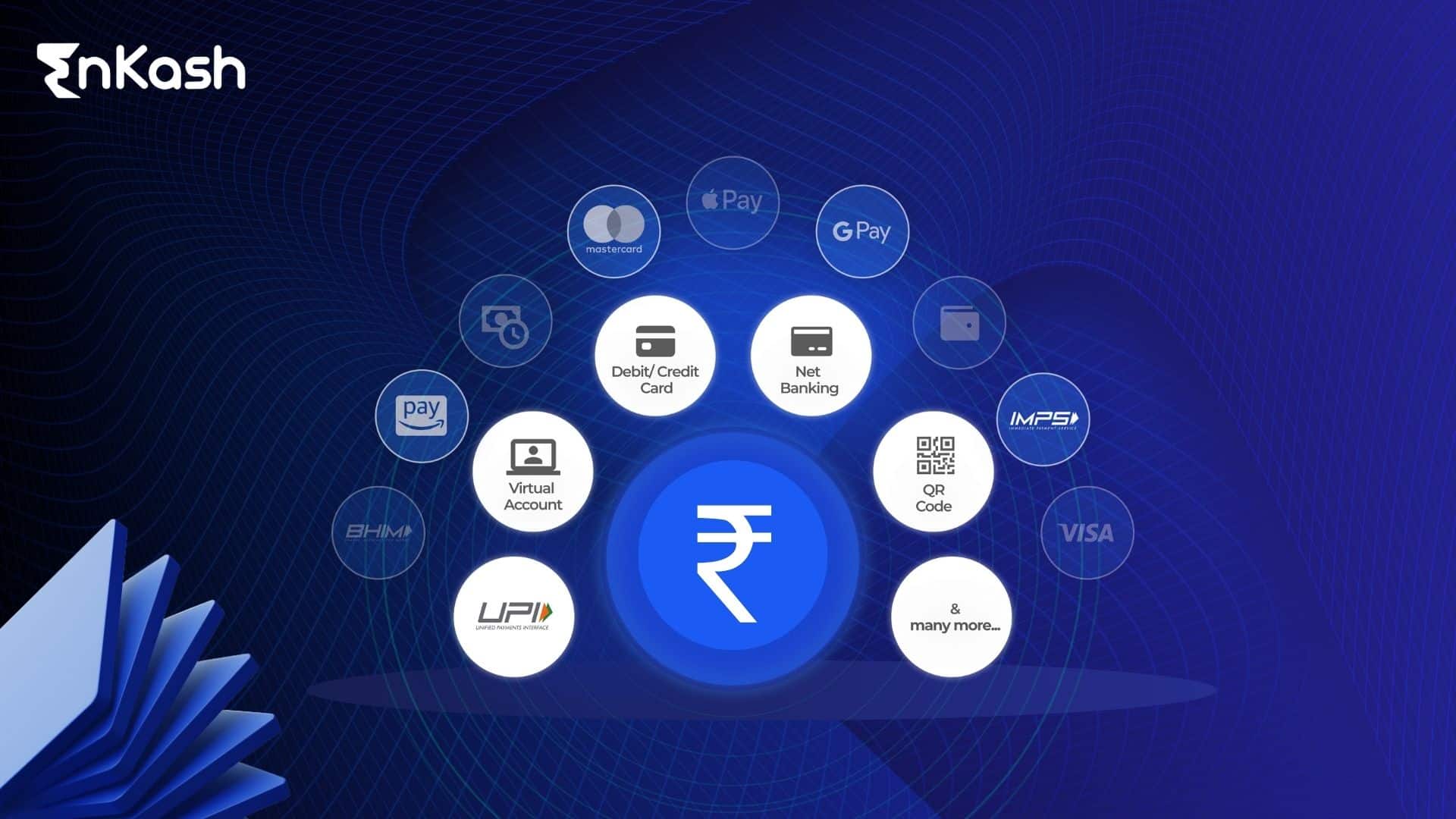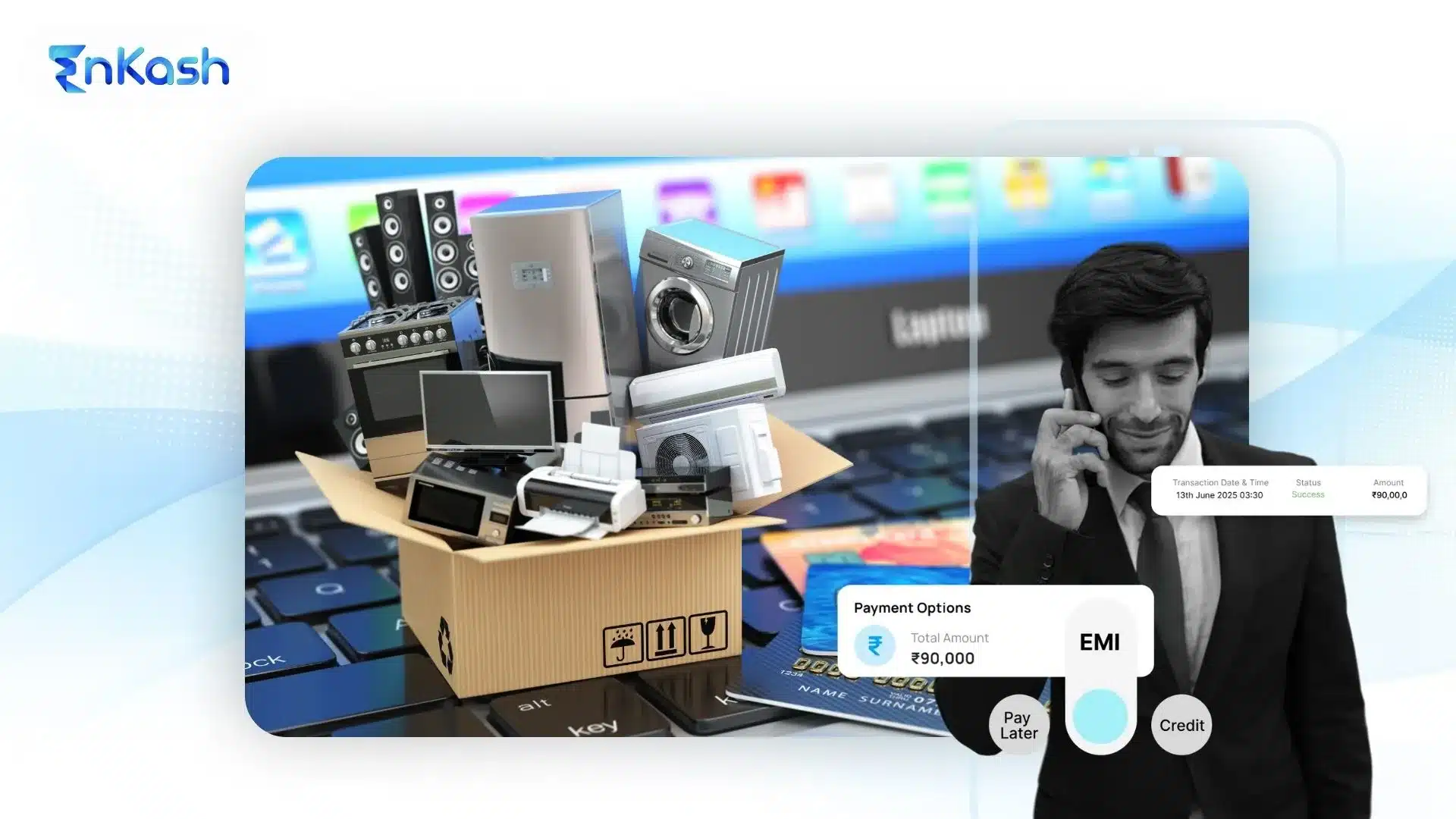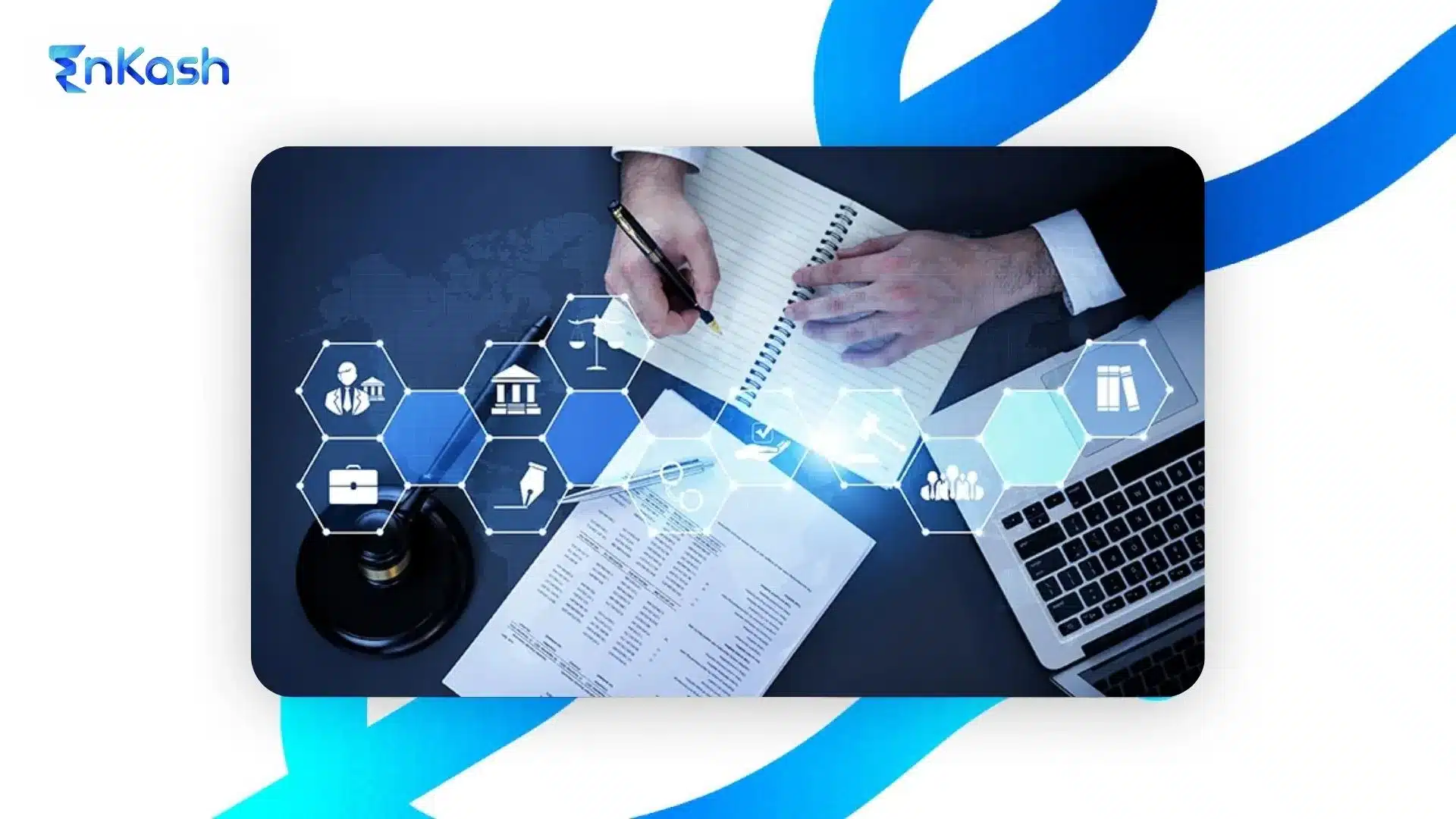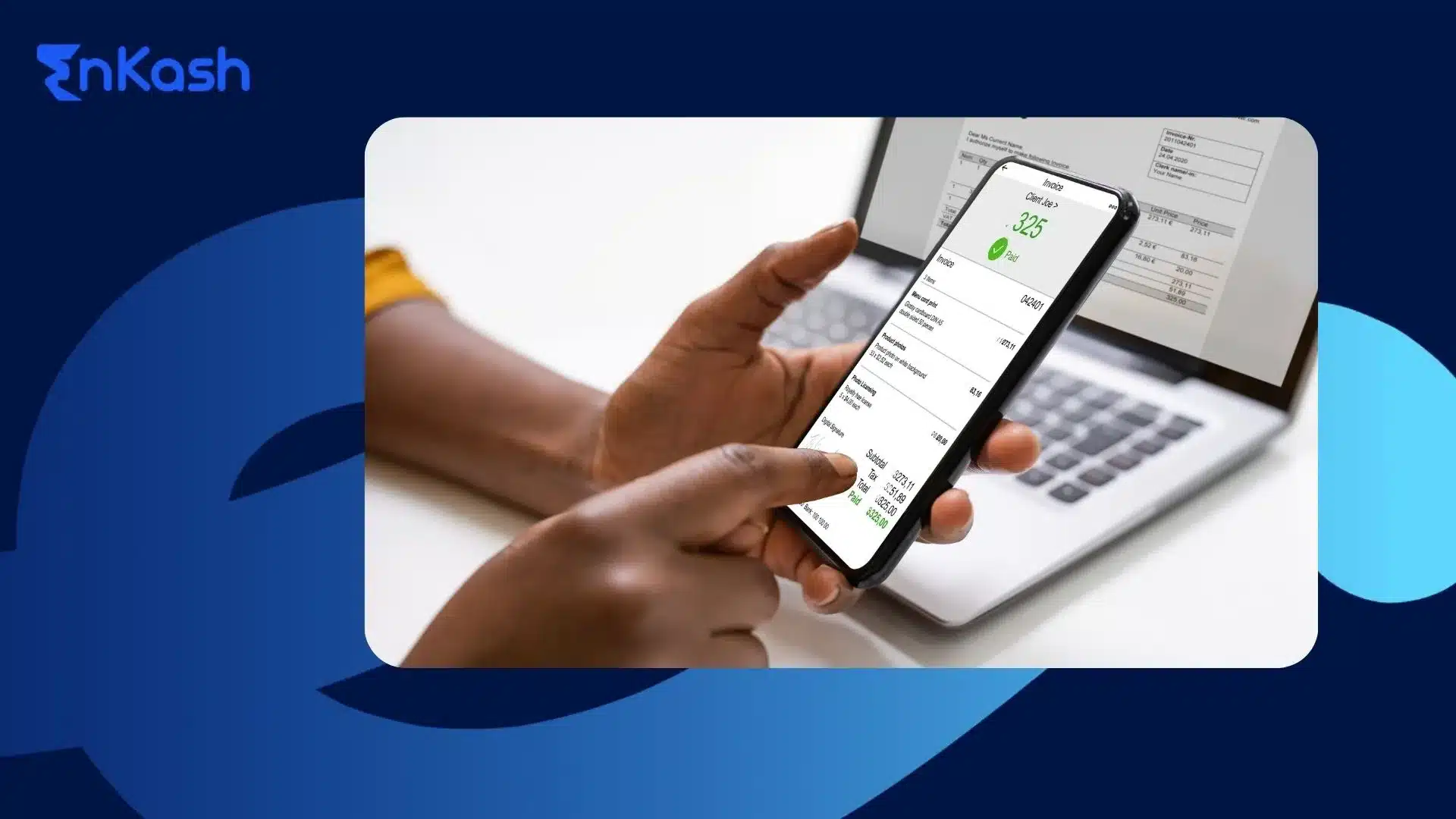As the volume of digital transactions increases throughout India in 2025, payment gateway selection has evolved into something more than just a technical decision; it is now a strategic one. From startups to e-commerce businesses and expanding enterprises, effective payment gateway management is essential for control over operational costs and driving profitability.
Given the abundance of payment solutions, individual businesses should be aware of costs relating to setup, transaction charges, platform costs, and any potential hidden charges. Payment collection agreements can be complicated, but businesses should aim to avoid being locked into restrictive agreements.
Introducing EnKash Payment Gateway, a modern, scalable, and cost-efficient gateway designed for the 21st-century, fast-paced businesses. EnKash is uniquely positioned as it offers payment collection solutions alongside smart features and affordability. Most importantly, it stands out for its reliable, value-driven performance and competitive pricing devoid of hidden charges.
In this guide, we will analyze the payment gateway pricing structure for the year 2025 alongside the leading platforms to evaluate their features and charges, enabling businesses to make strategic choices for their business advancement.
What is a payment gateway, and how does it work?
A payment gateway is a technology that securely authorizes and processes online payments between a customer and a merchant. When a customer purchases on your website, the payment gateway captures the payment information, encrypts it, and communicates with banks or card networks to complete the transaction.
In 2025, payment gateways have evolved far beyond simple card processing. Today’s platforms support UPI, net banking, credit/debit cards, wallets, and even EMI options — all through a single integration. They also offer real-time settlements, tokenization for secure transactions, and UPI Autopay for seamless recurring billing.
For businesses in eCommerce, SaaS, D2C, edtech, healthcare, and even professional services, payment gateways are essential for collecting money online efficiently and securely. They also help manage risks, reduce failed transactions, and ensure compliance with regulations like PCI-DSS and RBI guidelines.
Understanding how these platforms work — and the website payment gateway charges they involve — is key to choosing a solution that fits your business model. Whether you’re a startup or a high-volume enterprise, knowing the gateway payment charges upfront helps you manage costs and scale smartly.
What is a Payment Gateway Price?
Payment gateway prices are the fees levied by the payment gateway provider for processing your online transactions. These online payment charges cover the costs associated with securing the transaction, facilitating communication between your website/app, your customer’s bank, and your bank account, and managing potential risks like fraud.
Components of Payment Gateway Pricing
When choosing a payment gateway in 2025, it’s important to understand the different cost components involved. These charges can vary based on the provider, payment method, and your business size.
Here’s a breakdown of what to expect:
1. Setup Fee
This is a one-time cost charged when you first integrate the payment gateway with your website or app. Many providers, especially those targeting startups and small businesses, now waive the setup fee to encourage faster onboarding.
2. Monthly/Annual Platform Fee
Some gateways charge a recurring platform usage fee to maintain your account and provide access to advanced features like analytics, API integrations, or dashboards. However, many modern platforms offer zero platform fee plans for basic usage.
3. Transaction Fee (Per Payment Method)
- This is the most common charge — a percentage or flat fee applied to every successful transaction.
- UPI payments usually have the lowest fees (or are sometimes free for small ticket items).
- Credit/debit cards may have higher fees (typically 1.5%–2.5%).
- Wallets or EMI options may also have slightly higher rates.
- This is where the actual cost of accepting digital payments can add up, especially at scale.
4. Refund & Chargeback Fees
When a customer asks for a refund or disputes a payment (chargeback), the gateway may charge a small processing fee for handling the reversal, even if the transaction is voided.
5. Cross-Border or Multi-Currency Charges
If your business accepts international payments, additional fees apply for currency conversion, compliance, and international card processing. These charges vary widely and can impact margins, so businesses should compare carefully.
Understanding the Factors Influencing Payment Gateway Charges
Here are some important factors that can influence the total cost of your payment gateway services:
- Your Business Model: One of the primary factors influencing the online payment charges of your payment gateway is your business model. The type of business you operate and the average transaction value can significantly impact your payment gateway charges. A tiered pricing structure can be beneficial for high-volume businesses with smaller transaction sizes, and on the other hand, businesses with fewer but larger transactions might find a flat-rate pricing model more suitable
- Geographic Location: Location also influences the cost of your payment gateway, as charges can vary depending on where your customers are based.
- Payment Gateway Provider: There are many players in the market, and each player has their own pricing models and fee structures. It’s smart to compare options and choose a provider that aligns with your business needs and budget.
How Much Do Payment Gateways Charge in India?
When selecting a payment gateway, pricing is one of the most critical factors for businesses — especially in a competitive market like India. In 2025, most Indian payment gateways follow a similar base structure, but the actual charges vary depending on features, scale, and payment methods supported.
This section provides a comparative overview of popular Indian payment gateways such as EnKash, Razorpay, Cashfree, PayU, and others.
It breaks down:
- Setup Fees – Whether there’s an initial cost to get started (many offer zero setup charges now).
- Maintenance/Platform Fees – Ongoing monthly or annual platform usage charges, if any.
- Transaction Fees – The percentage or flat fee charged on every successful transaction, depending on the payment mode:
1. UPI (usually 0–0.5%)
2. Credit/Debit Cards (1.5%–2.5%)
3. Net Banking and Wallets - International Payments – Additional charges for cross-border transactions or foreign currencies.
You’ll typically see this data presented in a pricing comparison table to make it easier to understand how much each platform really costs.
EnKash Payment Gateway stands out in this comparison due to its transparent, scalable, and flexible pricing model — designed for businesses that are looking to grow without being burdened by hidden fees. Whether you’re a startup or an enterprise, EnKash offers clear terms and optimized pricing for different business models.
Hidden & Additional Costs to Watch Out For
While the base pricing of a payment gateway may seem affordable, businesses often overlook certain hidden or optional charges that can significantly increase total costs over time. Here are some commonly missed fees you should be aware of before choosing a gateway:
1. API Call Limits & Overage Charges
Some providers limit how many API requests you can make (such as for payment status checks or refund initiations). If you exceed this limit, you may be charged overage fees or asked to upgrade to a higher plan.
2. Delayed Settlement Fees
Standard settlement cycles (e.g., T+1 or T+2 days) are usually free, but if you need instant or same-day settlements, the provider might charge an additional fee per payout, especially for high-volume businesses.
3. Plugin or Platform Compatibility Costs
If your website uses a specific CMS like Shopify, WooCommerce, or Magento, you may need a premium plugin, or your developer might need to build custom connectors. This adds integration costs not always mentioned in upfront pricing.
4. Custom Reporting or Dashboard Add-ons
Advanced analytics, exportable reports, or role-based dashboards may be considered premium features by some gateways. Accessing these tools could come with additional monthly charges.
Additional Things To Consider When Choosing a Payment Service Provider
While cost is an important factor, it shouldn’t be the sole deciding factor when choosing a payment service provider. Here are some additional aspects to consider:
- Security: Ensure security is also a top priority for the payment service provider you choose and that they utilize robust measures like end-to-end encryption to protect the customer’s data and prevent fraud.
- Payment Processing Speed: Try to give a premium experience to your customers by offering them fast and efficient transaction processing, look for a payment provider that can help you get the best payment processing speed, minimizing wait times for your customers.
- Customer Support: Oftentimes, you might face challenges during or after integrating the payment gateway. This is when good customer support can be beneficial for you, so that you can quickly get answers to your queries and resolve disputes.
- Integration Ease: Choose a payment gateway with a seamless integration process to minimize disruption to your existing systems.
- Scalability: Consider your future growth plans and choose a payment gateway that can scale with your business needs.
Choosing the Right Payment Gateway for Your Budget
Selecting the right payment gateway isn’t just about the lowest price — it’s about finding the best value for your business needs. Here’s how to choose a platform that fits your budget while supporting your growth:
1. Consider Your Transaction Volume & Payment Methods
If your business processes small but frequent payments (like a subscription model), choose a gateway with low per-transaction fees. For larger, one-time payments, flat fees or capped charges might work better. Also, ensure the platform supports UPI, cards, wallets, EMI, and net banking — whichever your customers prefer.
2. Compare Pricing Models Carefully
Look beyond the advertised rates. Understand the total payment gateway cost, including transaction fees, setup charges, refund/chargeback fees, and settlement timelines. Choose one with transparent billing to avoid surprises later.
3. Prioritize Security & Scalability
Your payment provider must be PCI-DSS compliant, have strong fraud detection, and support secure protocols like tokenization. Also, pick a platform that can scale with your business as volumes grow.
4. Evaluate Uptime, Support, and Customization
Downtime during peak sales can hurt revenue. Ensure your gateway has a high uptime record (99.9%+), responsive support, and customization options like API access and branded checkout pages.
5. Always Take a Demo or Trial
Before committing, request a live demo or trial access to explore the dashboard, features, and ease of integration. This helps you validate the actual value vs. the cost of the service.
Conclusion
Payment gateways have already become essential for businesses, and their importance continues to grow as digital transactions dominate in 2025. Nowadays, every other business has already integrated or is looking to integrate a payment gateway on their website or app to provide a hassle-free user experience to their customers. By carefully reading this blog, you can learn the different types of charges associated with integrating a payment gateway and understand the factors influencing these charges. You can successfully opt for the best payment gateway for your business that suits your needs and is also easy on the pocket.
FAQs
1. What is the average payment gateway pricing in India in 2025?
The average payment gateway fee in India ranges from 0% to 3% per transaction, depending on the payment method — UPI being the cheapest and wallets/international cards on the higher end.
2. What are the hidden charges in payment gateways I should be aware of?
Watch out for settlement fees, API overage charges, refund/chargeback fees, and costs for custom integrations or advanced reports.
3. How much do payment gateways charge for credit card transactions?
Credit card payments typically incur a 1.5% to 2.5% transaction fee, depending on the provider and card network (Visa, MasterCard, Amex, etc.).
4. What’s the cost of building a custom payment gateway?
The cost of a custom-built payment gateway can range from ₹5–20 lakhs, depending on features, compliance requirements, and development time.
5. Are there any free payment gateways available in India?
Many gateways offer free setup and no monthly fees, but transaction fees still apply. UPI-based payments are usually the most affordable.








